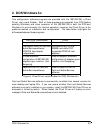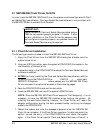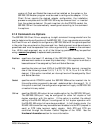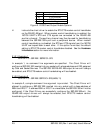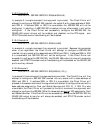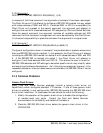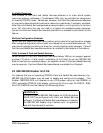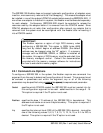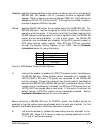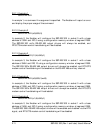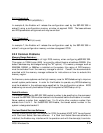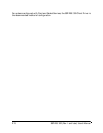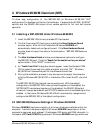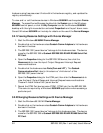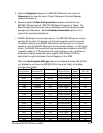
The SSP-200/300 Enabler does not support automatic configuration of adapters upon
insertion, more commonly referred to as "Hot Swapping". This means the adapter must
be installed in one of the system's PCMCIA sockets before executing SSP231EN.EXE. If
more than one adapter is installed in a system, the Enabler must be executed separately
for each adapter. Furthermore, SSP231EN.EXE should be executed to release the
resources used by the adapter before it is removed from the PCMCIA socket. Since
PCMCIA adapters do not retain their configuration after removal, any adapter that is
removed from the system must be reconfigured with the Enabler after re-inserting it
into a PCMCIA socket.
IMPORTANT:
The Enabler requires a region of high DOS memory when
configuring a SSP-200/300. This region is 1000H bytes (4KB)
long and by default begins at address D0000H (the default
address may be changed using the "W" option). If a memory
manager such as EMM386, QEMM, or 386Max is installed on
the system, this region of DOS memory must be excluded from
the memory manager's control. Consult the documentation
provided with the memory manager software for instructions
on how to exclude this memory region.
2.2.1 Command Line Options
To configure a SSP-200/300 in the system, the Enabler requires one command line
argument from the user to determine the configuration of the card. This argument must
be enclosed in parenthesis and within the argument, any or all of the following
parameters may be specified using a comma (no spaces) to separate each parameter:
Ssocket specifies which PCMCIA socket the SSP-200/300 must be inserted into for
this configuration argument to be used. socket must be in the range 0 - 15.
This option is required if the 'R' option is not used.
Baddress specifies the base I/O address of the SSP-200/300 in hexadecimal. This
address must reside on an even 8-byte boundary. This option is required if
the 'R' option is not used.
Iirq specifies the interrupt level (IRQ) of the SSP-200/300 in decimal. irq must be
one of the following values: 3, 4, 5, 7, 9, 10, 11, 12, 14, 15, or 0 if no IRQ is
desired. This option is required if the 'R' option is not used.
2-9 SSP-200/300 (Rev. I and later) User's Manual




